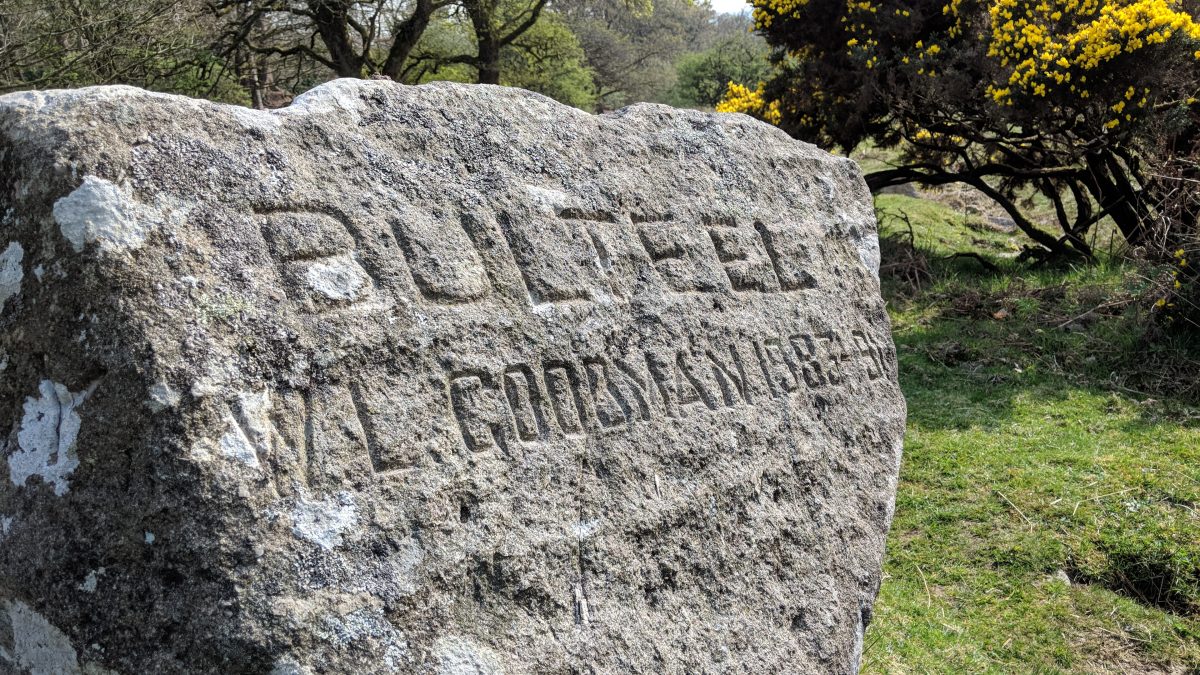An edited version of this article appeared in Dartmoor Magazine – Spring 2020, Issue 138, p48-49
As with the nearby Mary Meynell memorial, discussed in a previous article (Jenkinson 2019) the so-called Hunters’ Stone beside the River Avon on South Dartmoor has endured similar contradictions and occasional misinformation in the literature of the moor regarding its origins and purpose. Writing as long ago as 1892 John Lloyd Warden Page (JLWP) recounts an excursion to the area and upon reaching Brent Moor House (nowadays a flattened ruin) under the shelter of Black Tor, the passage reads:
‘between it and Shipley Bridge we shall have our attention drawn to a large rectangular boulder by the roadside-for we have reached a road now-and upon approaching, observe that it is inscribed. But not to any British Chief ‘Romanized’ or otherwise, but to certain west country worthies whose names the eccentricity of a former owner of Brent Moor House has caused to be carved upon the rock.’
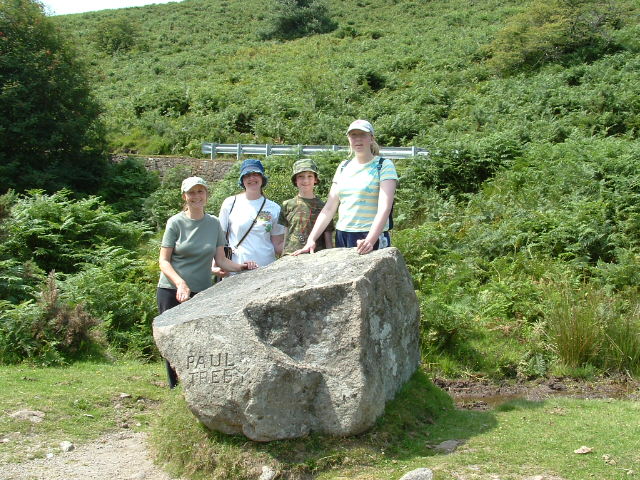
The author proceeds to inform the reader that in large characters we see ‘TRELAWNY’, ‘BULTEEL’, ‘CAREW’ and ‘PAUL TREBY’ together with the initials ‘M.H-D.D.’ these being ‘ those of the gentlemen by whose instrumentally these names, so well-known and honoured among the Nimrods of South Devon, have been thus perpetuated.’ Writinga little later in 1901 William Crossing (WC) repeats the four names cited by JLWP but omits the earlier observation of the two sets of initials. What we do learn is that the inscriptions commemorate ‘four worthies of the hunting field.’
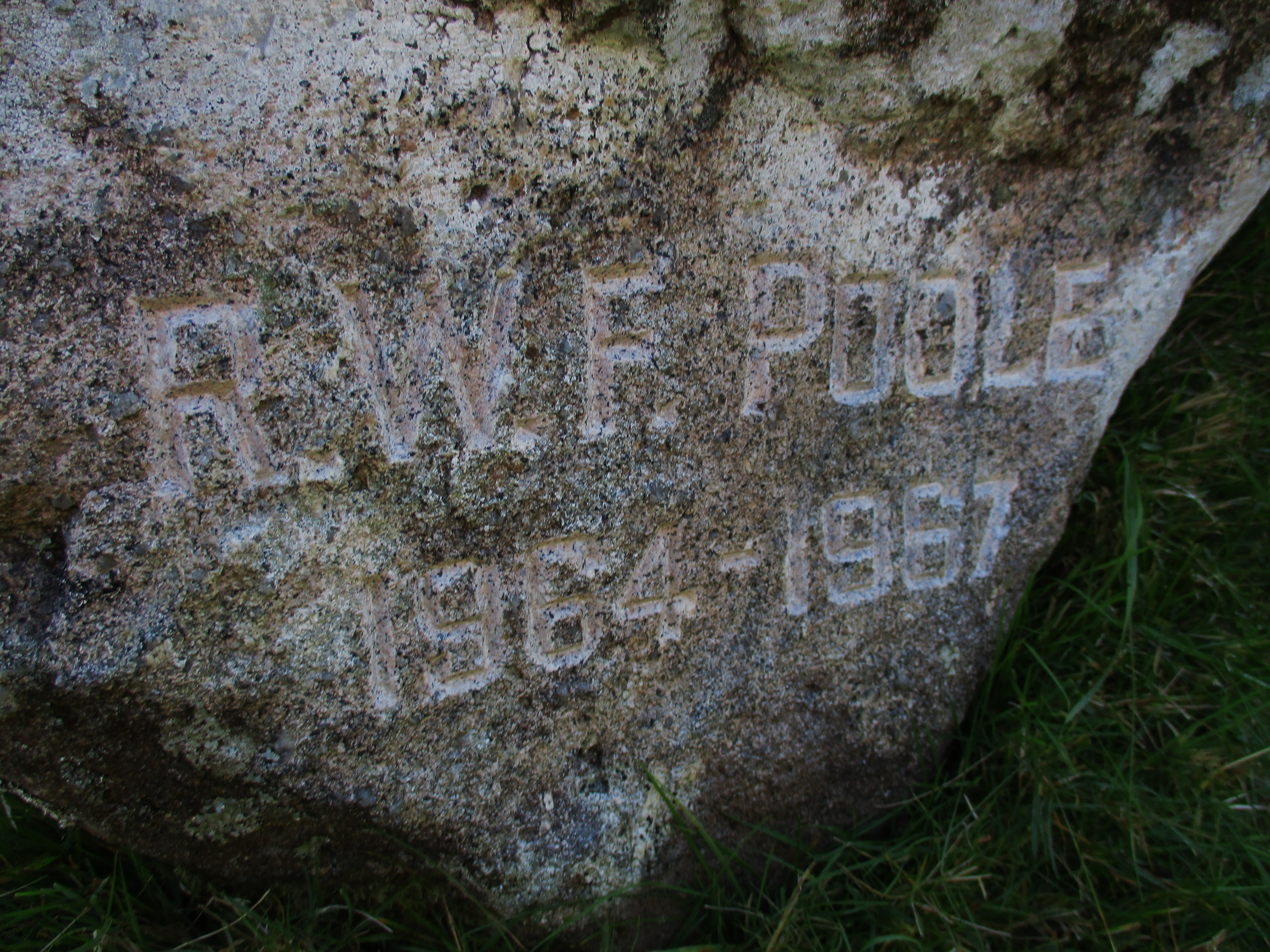
The actual name of the Hunters’ Stone does not appear until 1904 when WC writing for the Western Morning News states the following: ‘Among the pounds alluded to as being situated in the neighbourhood of Henchertraw there are two on that part of Zeal Hill overlooking the valley of the Avon, and one of these is particularly worthy of notice. It is placed on the brow of the hill above the Hunters’ Stone which stands by the way leading from the Moorgate at Shipley to the old quarries above Brent Moor Villa.’
Today the stone in question, with those same four names and now many others besides, is set on the grass verge in the fork of the minor road leading up to the Avon Filtration Works at SX 6814 6315, a place to which the stone was reportedly repositioned in 1954, so as to avoid damage to it from vehicles using the road during the construction of the Avon Dam (Brewer 1987). It commemorates noted members of the South Devon Hunt (sometimes the Devon or Dartmoor Hunt (Tozer 1916), many of whom are recorded as the Masters.
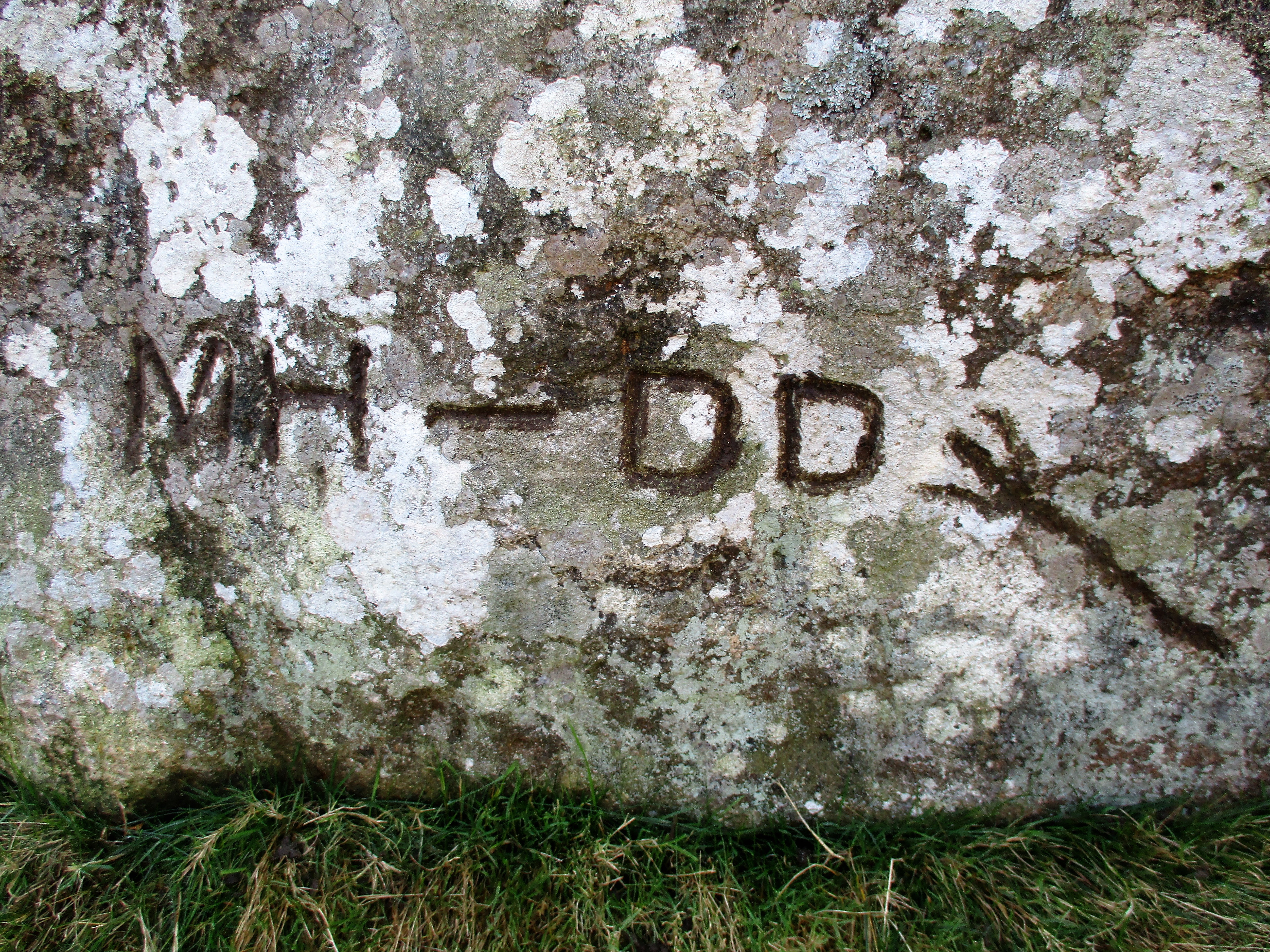
In 1909 Crossing advises that the memorial here was the work of a Mr C.A. Mohun-Harris who as JLWP recorded once lived at Brent Moor House. Christopher Arthur Harris was born in 1801 in Hampshire but was baptised in the West Devon village of Stowford where the family home was at Hayne House, nowadays Hayne Manor.
In the Census returns of the mid to late 19th Century Mr Harris is recorded as a landowner and Justice of the Peace (JP) for Devon. He seems to have adopted the surname of ‘Mohun’ in 1878 (Edwards Houghton 1989) from a distant relative’s connection on the maternal side to the 1st Baron Mohun of Okehampton whilst he was working as a sportswriter for various countryside journals. Therefore, the inception of the Hunters’ Stone might conceivably date from around that time. Towards the end of his life Mohun Harris lived at Cross House in Bishopsteignton and he passed away in November 1887. He is buried with other family members in the churchyard of St John the Baptist in Stowford and has a commemorative window inside the church that is dedicated to his family where his surname is hyphenated as Mohun-Harris.
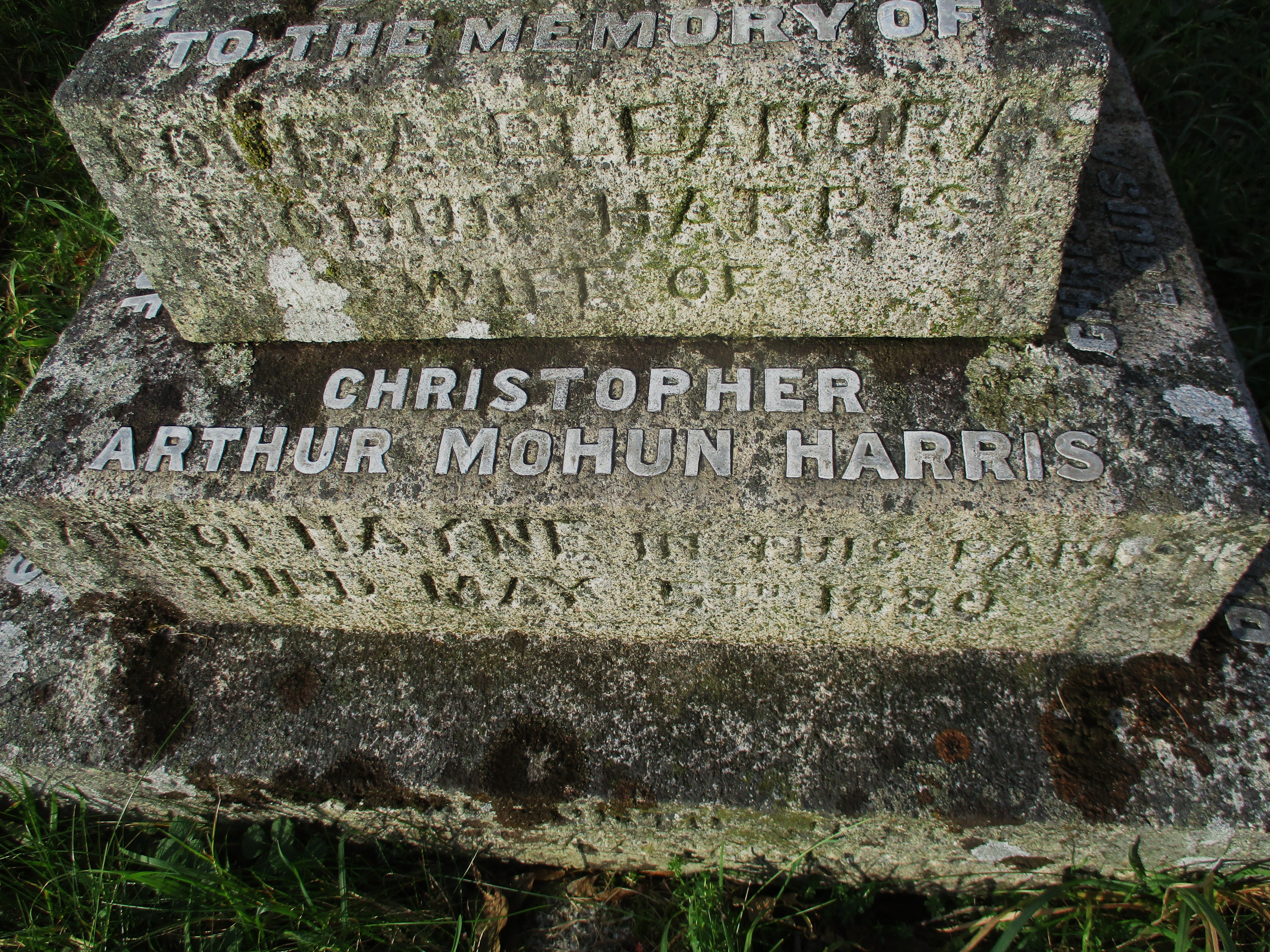
Despite this, the middle surname has been occasionally misspelt, possibly through typographical errors. The aforementioned Dave Brewer (1987) oddly refers to him as ‘C.H. Mohen Harris’ throughout his article, the second initial and first surname cited in error and the author also claims that he was a Doctor of Divinity thereby justifying the ‘D.D.’ on the stone along with the ‘M.H.’ for Mohun Harris. Whilst this seems a plausible explanation there is no evidence in the Census returns to support this assertion as Harris is always referred to as a ‘JP’ or ‘Magistrate’ for Devon. His obituaries in various periodicals from 1887 also fail to record this accolade. A Doctor of Divinity is normally one who practises in the teaching and exercise of theology.
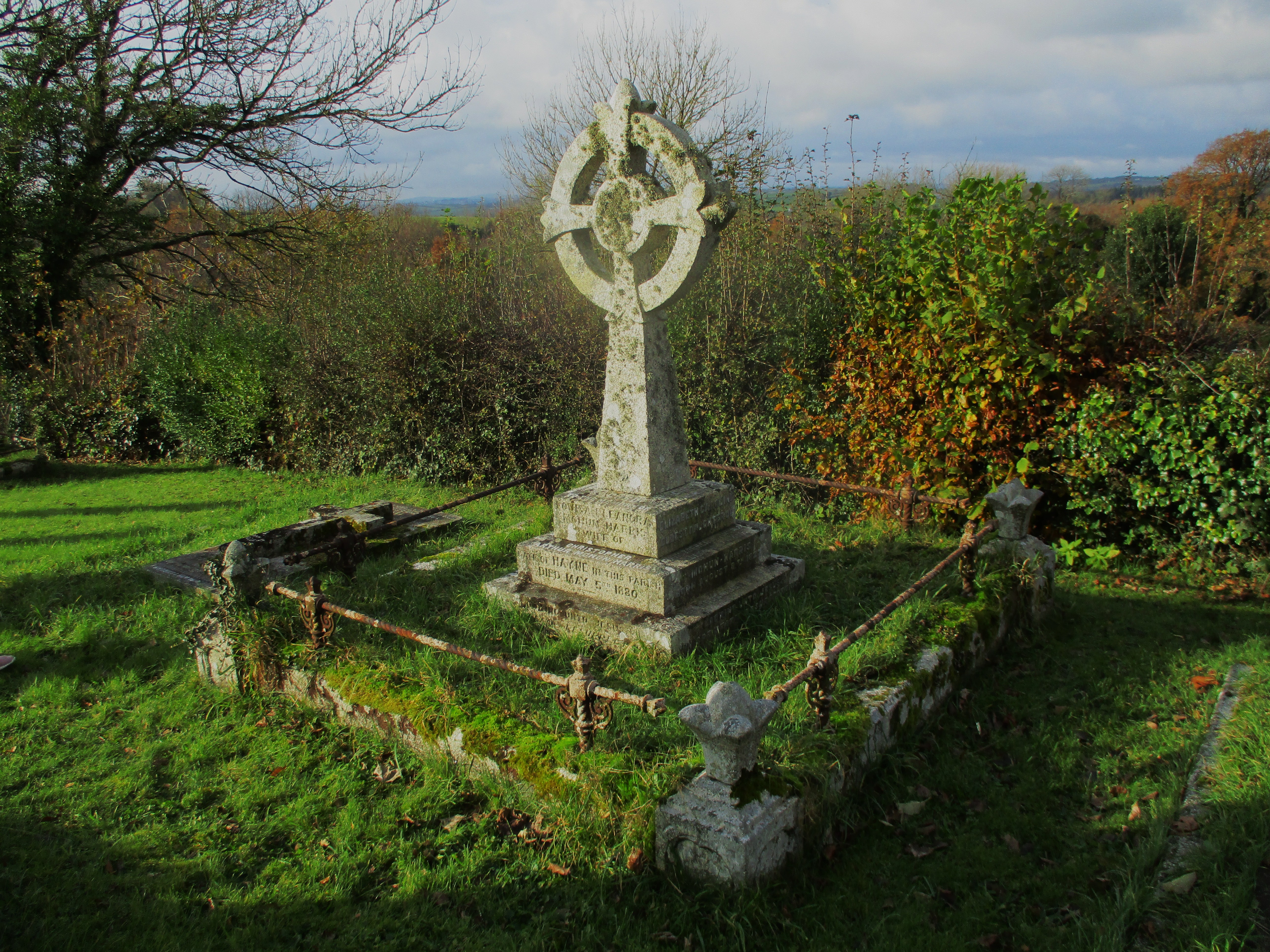
Another spelling error appears in the Dartmoor Magazine from 1993 regarding a short piece on the addition of a new name and date to the stone at that time, namely that of ‘W.L.Goodman 1983-91 ’, where the instigator of the memorial is this time cited as ‘C.H. Mohan Harris’ the incorrect ‘H’ retained and the ‘e’ now exchanged for another rogue ‘a’.
However, Dave Brewer’s account does include the important information that a stone mason from South Brent known as Billy Knott was commissioned to engrave the Hunters’ Stone, and this is confirmed by the same man’s obituary in the West of England Advertiser published on April 2nd1896. Under the heading ‘South Brent: A Village Worthy’ and having passed away at the age of 92 years as the then eldest resident, William Knott is described as a ‘ringer at the Parish church for 76 years.’ He is also credited with playing the organ, trombone and violin in the church choir. The tribute continues, ‘he will be long held in remembrance by the names carved by him of many Masters of hounds and huntsmen upon the large boulders upon Dartmoor.’
Perhaps the most confusing perspective on the history of the Hunters’ Stone comes from Eric Hemery (1983 p329), who in High Dartmoor gives the following information: ‘Within the fork of the filtration plant and dam roads is the Hunters’ Stone, inscribed with the names of huntsmen celebrated in the annals of Brent Moor House and the chase’, so far so good, but then we are told ‘The stone was cut in 1948 at the behest of C.A. Mohun-Harris who lived at Brent Moor House prior to its purchase by the South Devon Water Board as a prelude to the construction of the dam and its ramifications.’ Given what we know from the earlier commentaries this is a most baffling entry.
In the years since 1983, this misinformation has been repeated and has more recently found its way onto internet websites about the moor, where the troublesome date of 1948 has been perpetuated. Indeed, if that date was ever on the stone as Hemery implies it has not been found in recent years.
As at 2019 the various inscriptions on the stone that are still legible when looking from the path to the east read as follows:
Top:
COMMANDER C.H. DAVEY RN
1919-1940
CAREW
M.F. DOUGLAS PENNANT
CORYTON
1888-1916
Front:
PAUL TREBY
Back:
BULTEEL
W.L. GOODMAN 1983-91
R.W.F. POOLE 1964-1967
Right Side:
TRELAWNY
M.H.—- D.D.
There is what appears to be a rogue ‘C.K.’ engraved on the top left-hand edge of the upper surface along with a small arrow type carving on the right of the M.H.—- D.D. inscription. The C.K is remarked upon by Brewer (1987) as causing annoyance to the Dartmoor Hunt in 1954. Mary Florence Douglas Tennant is the only woman to be recorded on the stone and she is accredited with rescuing the activities of the Hunt in the post-World War Two era.
It is quite unusual to find two so widely written about memorials that are set so close together, as the ones on the pathway leading from Shipley Bridge towards the Avon Dam. Both the Mary Meynell pedestal and the Hunters’ Stone have received their fair share of attention in the literature of Dartmoor, but both have suffered from inconsistencies regarding reports on their origins and purpose. Errors in the interpretations of dates and names have been at the forefront of the problems particularly regarding the Hunters’ Stone which still to this day commemorates distinguished members of the Dartmoor Hunt. It is hoped that along with the previous article on the story of Mary Meynell and the various issues associated with that, that some of these inconsistencies have now been addressed and that a little more light has been shed on the actual history of both memorials that survive to this day beside the picturesque River Avon.
References:
Brewer D (1987) Brent Moor House and The Hunter’s Stone Dartmoor Magazine 8 Autumn
Crossing W (1901) One Hundred Years on Dartmoor: Historical Notices on the Forest and its Purlieus During the Nineteenth Century Western Morning News Plymouth
Crossing W (1904) The Stones of Dartmoor and their Story: IV Crumbling Relics in a Heathery Land Western Morning News August 24th.
Crossing W (1909) Guide to Dartmoor: A Topographical Description of the Forest and Commons Western Morning News Plymouth
Dartmoor Magazine (1993) Back Chat Number 30 Spring p4
Edwards Houghton W (1989) The Wellesley Index of Victorian Periodicals 1824-1900 Volume 5 University of Toronto Press
Hemery E (1983) High Dartmoor: Its Land and People Robert Hale London
Jenkinson T (2019) The Mary Meynell Story: A Review of the Literature Dartmoor Magazine No 137 Winter
Lloyd Warden Page J (1892) An Exploration of Dartmoor and its Antiquities- with some account of its borders 3rd edition, Seeley and Co Ltd
Tozer E (1916) The South Devon Hunt: a history of the hunt from its foundation covering a period of over a hundred years with incidental reference to neighbouring packs published by the author
West of England Advertiser (1896) South Brent: A Village Worthy: April 2nd

